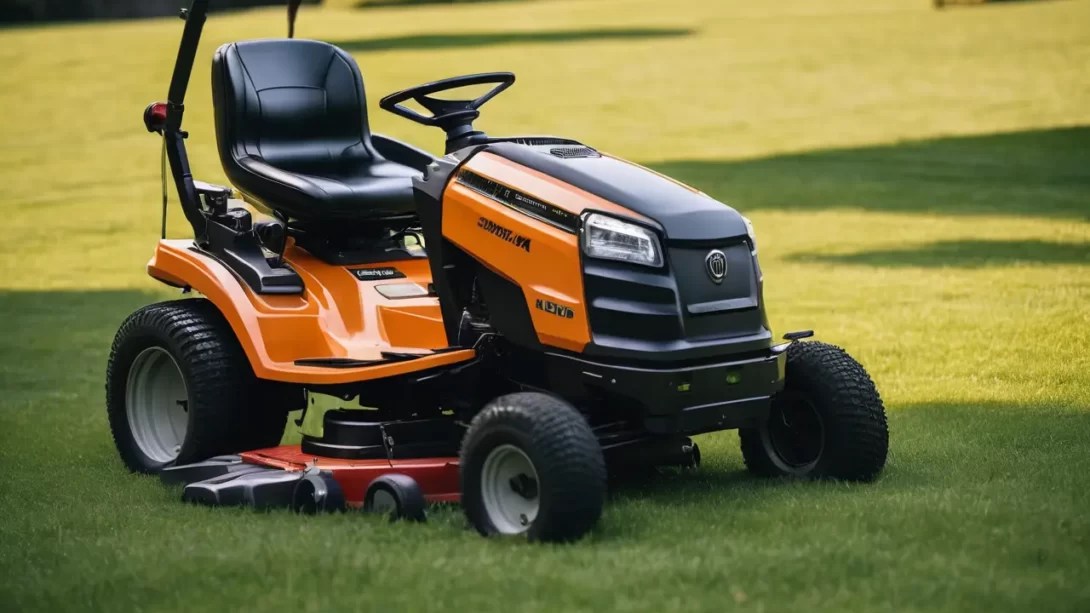Riding mowers are a game-changer for maintaining large lawns. They reduce physical strain and significantly cut down mowing time compared to push mowers. However, operating a riding mower requires understanding its functionality and prioritizing safety. This article will guide you through the process, from selecting the right mower to preparing for your mowing session.
Choosing the Right Riding Mower
When selecting a riding mower, consider the size and terrain of your lawn. Smaller lawns might benefit from a standard ride-on mower, while larger areas are better suited to garden tractors with more power and wider cutting decks. Key features to look for include cutting width, which determines how much grass you can cut at once, and engine power, which affects the mower’s ability to handle thick grass and hills. Additional considerations might include fuel type, comfort features, and attachments for tasks like mulching or bagging clippings.
Preparing to Mow
Inspecting the Lawn
Before mowing, take a walk around your lawn. Remove any rocks, sticks, or debris that could damage the mower’s blades or become dangerous projectiles. Pay special attention to uneven areas or hidden obstacles that could pose a risk. Identifying these hazards ensures a smoother mowing experience and helps protect your equipment.
Checking the Mower
Regular maintenance is key to the longevity and efficiency of your riding mower. Check the tire pressure to ensure stable operation. Inspect the blades for sharpness, as dull blades tear grass, leading to an unhealthy lawn. Verify the oil level and top up if necessary. Adjust the cutting deck height according to your lawn’s grass type and desired length; most lawns benefit from being cut to around 2-3 inches in height.
Safety Measures
Safety is paramount when operating a riding mower. Always wear protective gear, including sturdy shoes and eye protection. Familiarize yourself with the mower’s safety features, such as the emergency shut-off. Never bypass safety systems designed to protect you and others. It’s also important to read and understand the mower’s manual, especially if you’re a first-time user.
Mowing Technique
Starting the Mower
To start your riding mower, first, ensure that it is on a flat, stable surface. Engage the parking brake and set the mower deck to its highest setting. Sit in the driver’s seat, check that the controls are in neutral, and turn the ignition key. Some models may require you to disengage the cutting blades or press a safety button while starting.
Mowing Patterns
Choosing an effective mowing pattern can significantly enhance your lawn’s appearance and health. For most lawns, a simple back-and-forth pattern in straight lines is effective. Begin by mowing the perimeter of the lawn, which creates a turnaround space and defines the area you’re working on. For sloped lawns, mow across the slope, not up and down, to prevent tipping. Overlapping each pass slightly ensures no strips of uncut grass are left behind.
Speed and Handling
The right speed is crucial for a uniform cut. Riding mowers typically have adjustable speed settings. For a clean, even cut, avoid the fastest speed, especially over uneven ground where the mower could scalp the lawn. Navigate turns gently to avoid damaging the grass and create smooth, consistent lines. When handling obstacles like trees or garden beds, slow down and give them a wide berth to prevent accidents or damage.
Post-Mowing Maintenance
Cleaning the Mower
After mowing, it’s important to clean your mower to maintain its performance and longevity. Use a garden hose to rinse away grass clippings from the mower deck. Be sure to disconnect the spark plug before cleaning to prevent accidental starts. Removing grass and debris helps prevent rust and keeps the blades sharp for longer.
Storing the Mower
Proper storage of your riding mower is essential. Store it in a dry, covered area to protect it from the elements. If storing for an extended period, such as over winter, refer to the owner’s manual for specific long-term storage steps. This often includes draining the fuel, disconnecting the battery, and ensuring the mower is clean and dry to prevent rust and deterioration.
Conclusion
Mastering the use of a riding mower takes practice, but by following these guidelines, you can achieve a beautifully maintained lawn with efficiency and safety. Remember to choose the right mower for your lawn’s size and terrain, prepare both the lawn and mower before starting, follow safety protocols, and use effective mowing techniques. Regular maintenance of your mower ensures its longevity and optimal performance.



